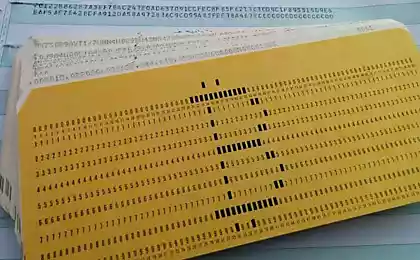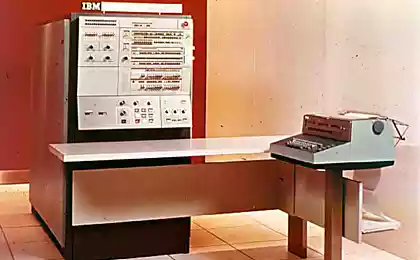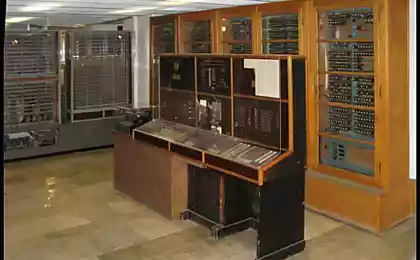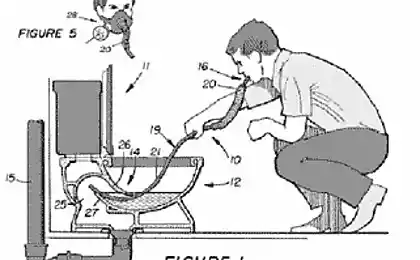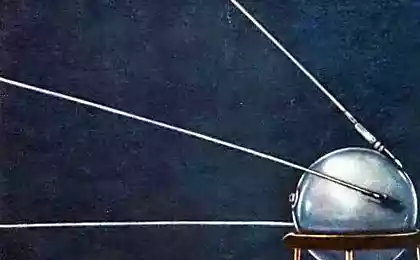1083
Forrester and his "Whirlwind"
Background on tube computers - Whirlwind ( «Whirlwind»)
In 1943-1944 there was a need to develop a universally simulator, which could in real time to simulate the flight of the aircraft. This would allow pilots to improve their skills as designers to explore the impact of possible changes in the tactical and technical characteristics of the new models. Until that time, there are simulators (on the basis of analog electromechanical equipment), but they were not universal, that is only suitable for certain aircraft structure.
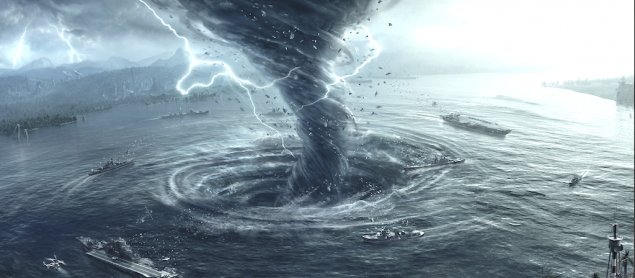
Creating a universal simulator would help save money on the construction and training.
Massachusetsky Institute of Technology was one of the centers where the improved US defense systems. At the end of 1944 at MIT began work on the creation of such a simulator, the executor of the project was laboratory servos. Jay Forrester led the ASCA project assistant became Master of Electrical Engineering Robert Rivers Everett.
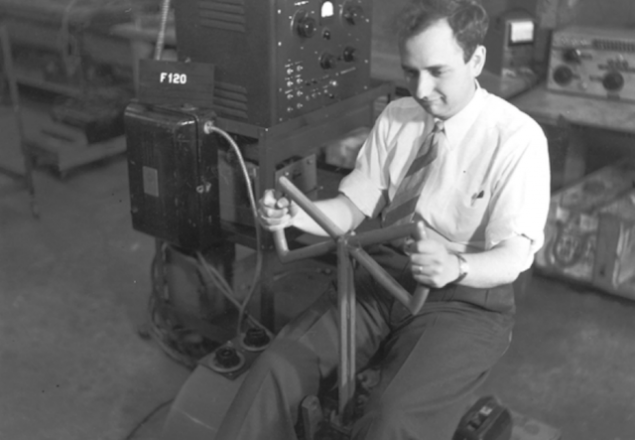
simulator aircraft
Together with a group of six months they worked on the creation of electro-mechanical analog simulator. Electronic analog technology in real-time giving low accuracy of calculations, was not able to solve at the same time a hundred or more differential equations with many variables, and therefore did not meet the customer's request, and simple operations require prolonged trouble with punched cards or punched tape.
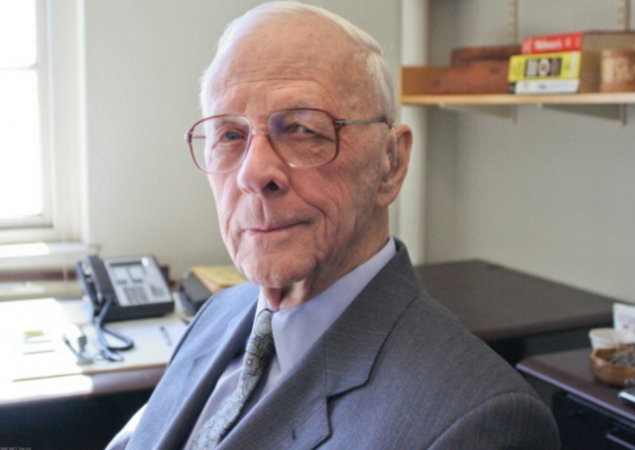
Jay Forrester 14 July 1918 on a ranch in the town of Climax Jay Wright Forrester was born in the family of Ethel Pearl Forrester and Forrester Marmaduke Montrose. His father was a graduate of the College of Hastings (Nebraska), immediately learned his mother. In 1910 they bought a ranch of cattle in the city. We worked as a teacher at the school. From 1 to 2 class Forrester was educated at home with his mother, then he went to school, where he taught his parents.
From childhood he was interested in switches and other devices that, as he himself said, "instilled" love to electricity. Life on the ranch was not easy, but it contributed to efforts to find solutions to complex problems, and this tempers and formed his character and ability. He built the tower of a wind generator, which allowed to conduct electricity to the ranch.
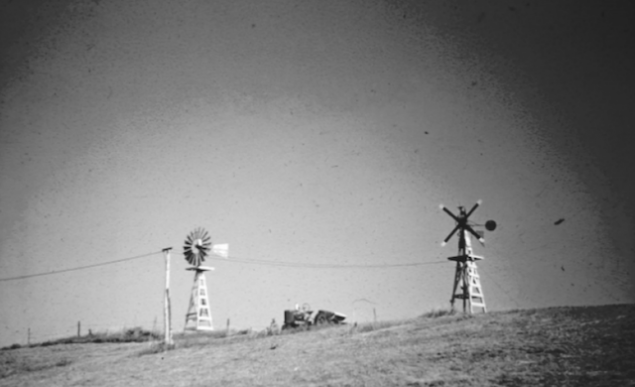
Forrester constructed a wind tower - generator
Jay entered the University of Nebraska, to learn the basics of working with electricity.
After graduation, he moved to the East Coast, where he was hired as an assistant in research at MIT. Forrester began working with high-voltage generators.
In 1940 he was promoted to Director of the Association together with the server-mechanical Brown Lab MIT. During the war, the main work was carried out for the United States Government on the draft attack control systems and radars. Here and work began on the creation of a "Vortex".
We had to find a new solution to the problem.
The birth of digital machines BT largely contributed to Perry A. Crawford, Forrester colleague "... he told me about the car Harvard Mark I and about ENIAC'e, who was still in the design stage. Perry was a very open, devoid of bureaucratic manners person and easily dealt with naval chiefs, although he was a civilian. He instilled in them the idea that digital computers in the future be used to command posts as the basis of information and management systems ... to him we owe much of the birth of our car ".
Work has begun on the creation of the machine, which was given the name "Whirlwind", to emphasize her performance. Employees engaged in the development of conceptual options for digital machines (the customer has been notified about this turn of events). Forrester and Everett acquainted with the structure of the Mark I and the ENIAC, consulted with their developers, we have studied "The first version of the report on the EDVAC" (Neumann) and began to "sculpt" the car from scratch.
In 1945, Forrester asked executives to SDD. He offered them to create a simulator is not on rough analog computing devices, and on the basis of a digital computer. Upcoming hard work to create a computer that could operate in real time.
It was necessary to increase its speed up to 20-50 thousand operations per second, use a reliable high-capacity internal memory, create the software for processing the incoming data flow, improve machine reliability. The main difficulty was the fact that address this issue have been people who did not have experience in working with digital computer.
Work has begun on the creation of internal memory, which would satisfy the requirements of the project, and for this purpose it was necessary to improve the reliability of lamp discrete circuits. The main memory of the computer EDVAC, which consisted of 32 mercury ultrasonic delay lines (RULZ), not suitable for the new project because of the slowness. Forrester tried to use to store a gas-filled discharge lamp ( "neonki") and xenon flash lamps (xenon flash lamp). In early 1947, British scientists for the creation of internal memory began to use a standard cathode ray tube (CRT), it made it possible to store on its screen and reading from it one bit position. Four years MIT employees were working on the tube design, it has been stabilized and the uniformity of the diameter of the spot on the handset screen, improved focus, additional electron-beam gun is used for the periodic regeneration of an electrostatic charge.
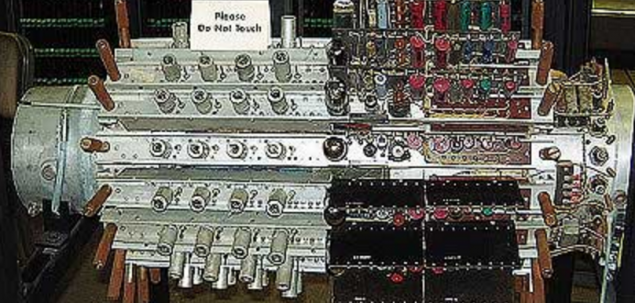
RULZ
Work was conducted to increase the reliability of lamp circuits. Until that time (as it is known) in vacuum-tube machines used by thousands of lamps, but "living" such a lamp was 500 hours, and it would lead to the fact that every couple of minutes to a crash occurred in the machine. It increased lamp life. In 1947, we developed a multiplier, which contained hundreds of lamps 4, 5 to multiply two-digit binary numbers. Everett wrote, "... the device worked continuously for many days, and each result we have to check with the correct answer. Of course, it is faltering, but we have noticed that in most cases they fall to 3 pm. It turned out that at this time cleaner at the next entrance of the building included the freight elevator, and there is an additional burden on the local power grid, this also led to failures was decided for the machine power to use a separate system "engine - generator.", the inertia of which provides protection from voltage spikes that occur when you connect additional equipment ... "

Later, there was another problem that needed solving. Changed sponsor (OSRD and SDD have ceased to exist, and they financed the project), has steadily increased the cost of the project to develop such a computer. "Whirlwind" was planned to create in two years, with a budget of 875 thousand dollars, but the cost of the project increased to $ 3 million (representing 65% of the total budget of the Mathematics Department). To justify such an expenditure of funds Forrester has prepared a report for the Pentagon, which was painted which could be used such control computer. Yet instead of the requested 1, $ 5 million a year for the project, Forrester and his project has been allocated only 250 thousand dollars. The project saved a new sponsor - the US Air Force (this happened in 1949, when Americans learned that the atomic bomb was tested in the USSR). The project to create a computer "Whirlwind" was approved by the Pentagon and the necessary amount for its completion. In March 1951, the machine has been completely assembled, adjusted and completed the first large program written in assembler John Gilmore, in April of the same year was put into operation, and Forrester set up a laboratory headed by a digital computer technology in MIT.
Computer " Whirlwind »

The development took nearly 5 million dollars, was based on the classic Princeton architecture, but for the exchange of information between the blocks of the machine used a common bus. Diode array was used to control the sequence of operations in a computer, the signals from the clock source received on certain inputs of the matrix, while its output signals with a key, which selects the desired command code is supplied to the corresponding register control. The length of the machine word was limited to 16 bits, here the sign was included among fixed-point routines for working with floating point and double word length.
The car placed 5000 lamps (mostly penthodes) 11,000 crystal diodes, it consumed 150 kilowatts of power, the weight of such a computer - 10 tons, occupied an area of almost 950 square meters. m.
Whirlwind was unicast, synchronized action with a clock frequency of 1 MHz, the machine c internal memory, which contained 32 modified tube Williams capacity of 1K words. Group 32-bit registers, built on the mechanical keys and 5 electronic registers were used to check the memory performance.
Punched tape and card reader is used for data input and computer programs. CRT 40 cm in diameter served display. Data was entered into the machine on the tape, perforated fleksorayterom. And the results are displayed on a CRT screen or displayed on the same fleksorayter.
CRT was similar to a television, a large electron vacuum tube in which the electron beam falling on the phosphor-coated inner surface of the screen, caused it to glow. The speed of the machine is 20 thousand operations per second, the addition operation is performed for 49 ms and 61 ms per multiplication.
Computer "Whirlwind" was modernized and the number of lamps has increased to 12, 5000, and diodes - to 23, 8000, occupied two floors of the car in one of the buildings of MIT. Located on one tape drives and communications devices and objects. Part of the machines, the internal memory and a control panel located on the other, in the basement there was a supply unit (150 kW) rooftop air conditioning was installed.
The content of computer memory managed in 32 thousand dollars a month (one tube cost about $ 1,000), so Forrester was looking for a replacement of CRT. In 1951, the first sample storage has been created on ferrite cores, which in two years has replaced the memory on a CRT. Speed computers has doubled, the operation of addition took 8 microseconds, multiplication, -25, 5 microseconds, division -.. 57 microseconds
.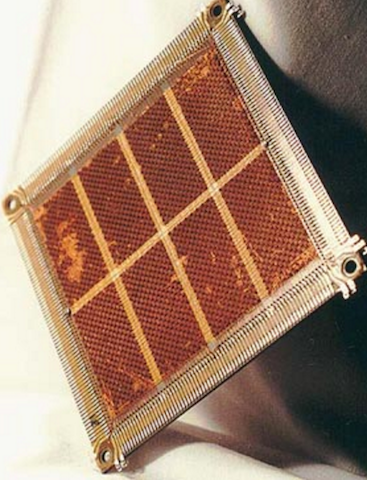
memory on ferrite cores
External storage devices are now served five tape drives (with a capacity of 125 thousand words each, and read 390 words per second) and two storage on magnetic drums (capacity 2048 words and the speed of 60 rev / s, the speed of read / write operations - 31 thousand words per second).
To play on the fluorescent screen of letters, numbers, topographical signs and other symbols used Charactron tube (both displays). An opaque plate with a set of micro-holes in the form of characters depicted served stencil through which symbols formed on the screen. Software machine allows computers to solve several problems at once, working in time-sharing
direct memory access method (DMA)
Whirlwind became the prototype of a number of computers that are allowed to create a powerful system of air defense of the USA «SAGE» -poluavtomaticheskaya system that can simultaneously handle data coming from 23 regional centers in the USA and Canada at the same time serve a giant network of radars and other detectors.

It looked like this: the operator in each regional center has introduced the data on the keyboard, depending on the round screens, displaying weather conditions, the trajectory of the aircraft, the information required for the operation of air defense systems. SAGE system input-output devices that support over telephone lines continuous connection between the neighboring centers. On the creation of SAGE was spent 8-12 billion. Dollars.
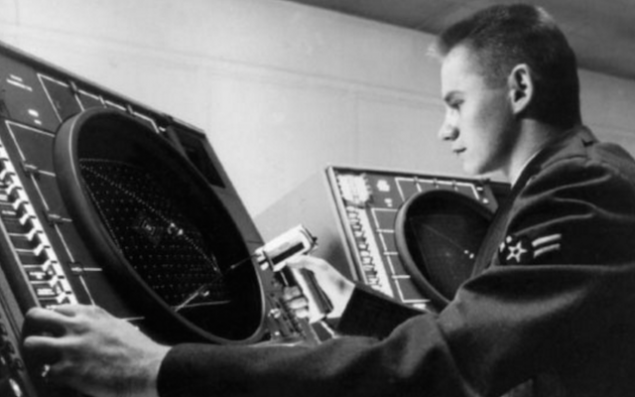
workplace first system operator US national defense - SAGE
Work on the "Whirlwind" project gave invaluable experience of its creators and developers. Many of them occupied senior positions in many well-known companies: Kenneth Olsen founded in 1957 by Digital Equipment Corporation (DEC) - engaged in the production of mini-computers
. Forrester himself remained the head of the department before 1956, later devoted himself to studies of the dynamics of production, as well as the world's social and economic processes, and became the founder of a new discipline - system dynamics. Forrester and Everett were awarded the National Medal for achievements in technology, the highest government award for the United States engineers.
Source: geektimes.ru/company/ua-hosting/blog/271212/
In 1943-1944 there was a need to develop a universally simulator, which could in real time to simulate the flight of the aircraft. This would allow pilots to improve their skills as designers to explore the impact of possible changes in the tactical and technical characteristics of the new models. Until that time, there are simulators (on the basis of analog electromechanical equipment), but they were not universal, that is only suitable for certain aircraft structure.

Creating a universal simulator would help save money on the construction and training.
Massachusetsky Institute of Technology was one of the centers where the improved US defense systems. At the end of 1944 at MIT began work on the creation of such a simulator, the executor of the project was laboratory servos. Jay Forrester led the ASCA project assistant became Master of Electrical Engineering Robert Rivers Everett.

simulator aircraft
Together with a group of six months they worked on the creation of electro-mechanical analog simulator. Electronic analog technology in real-time giving low accuracy of calculations, was not able to solve at the same time a hundred or more differential equations with many variables, and therefore did not meet the customer's request, and simple operations require prolonged trouble with punched cards or punched tape.

Jay Forrester 14 July 1918 on a ranch in the town of Climax Jay Wright Forrester was born in the family of Ethel Pearl Forrester and Forrester Marmaduke Montrose. His father was a graduate of the College of Hastings (Nebraska), immediately learned his mother. In 1910 they bought a ranch of cattle in the city. We worked as a teacher at the school. From 1 to 2 class Forrester was educated at home with his mother, then he went to school, where he taught his parents.
From childhood he was interested in switches and other devices that, as he himself said, "instilled" love to electricity. Life on the ranch was not easy, but it contributed to efforts to find solutions to complex problems, and this tempers and formed his character and ability. He built the tower of a wind generator, which allowed to conduct electricity to the ranch.

Forrester constructed a wind tower - generator
Jay entered the University of Nebraska, to learn the basics of working with electricity.
After graduation, he moved to the East Coast, where he was hired as an assistant in research at MIT. Forrester began working with high-voltage generators.
In 1940 he was promoted to Director of the Association together with the server-mechanical Brown Lab MIT. During the war, the main work was carried out for the United States Government on the draft attack control systems and radars. Here and work began on the creation of a "Vortex".
We had to find a new solution to the problem.
The birth of digital machines BT largely contributed to Perry A. Crawford, Forrester colleague "... he told me about the car Harvard Mark I and about ENIAC'e, who was still in the design stage. Perry was a very open, devoid of bureaucratic manners person and easily dealt with naval chiefs, although he was a civilian. He instilled in them the idea that digital computers in the future be used to command posts as the basis of information and management systems ... to him we owe much of the birth of our car ".
Work has begun on the creation of the machine, which was given the name "Whirlwind", to emphasize her performance. Employees engaged in the development of conceptual options for digital machines (the customer has been notified about this turn of events). Forrester and Everett acquainted with the structure of the Mark I and the ENIAC, consulted with their developers, we have studied "The first version of the report on the EDVAC" (Neumann) and began to "sculpt" the car from scratch.
In 1945, Forrester asked executives to SDD. He offered them to create a simulator is not on rough analog computing devices, and on the basis of a digital computer. Upcoming hard work to create a computer that could operate in real time.
It was necessary to increase its speed up to 20-50 thousand operations per second, use a reliable high-capacity internal memory, create the software for processing the incoming data flow, improve machine reliability. The main difficulty was the fact that address this issue have been people who did not have experience in working with digital computer.
Work has begun on the creation of internal memory, which would satisfy the requirements of the project, and for this purpose it was necessary to improve the reliability of lamp discrete circuits. The main memory of the computer EDVAC, which consisted of 32 mercury ultrasonic delay lines (RULZ), not suitable for the new project because of the slowness. Forrester tried to use to store a gas-filled discharge lamp ( "neonki") and xenon flash lamps (xenon flash lamp). In early 1947, British scientists for the creation of internal memory began to use a standard cathode ray tube (CRT), it made it possible to store on its screen and reading from it one bit position. Four years MIT employees were working on the tube design, it has been stabilized and the uniformity of the diameter of the spot on the handset screen, improved focus, additional electron-beam gun is used for the periodic regeneration of an electrostatic charge.

RULZ
Work was conducted to increase the reliability of lamp circuits. Until that time (as it is known) in vacuum-tube machines used by thousands of lamps, but "living" such a lamp was 500 hours, and it would lead to the fact that every couple of minutes to a crash occurred in the machine. It increased lamp life. In 1947, we developed a multiplier, which contained hundreds of lamps 4, 5 to multiply two-digit binary numbers. Everett wrote, "... the device worked continuously for many days, and each result we have to check with the correct answer. Of course, it is faltering, but we have noticed that in most cases they fall to 3 pm. It turned out that at this time cleaner at the next entrance of the building included the freight elevator, and there is an additional burden on the local power grid, this also led to failures was decided for the machine power to use a separate system "engine - generator.", the inertia of which provides protection from voltage spikes that occur when you connect additional equipment ... "

Later, there was another problem that needed solving. Changed sponsor (OSRD and SDD have ceased to exist, and they financed the project), has steadily increased the cost of the project to develop such a computer. "Whirlwind" was planned to create in two years, with a budget of 875 thousand dollars, but the cost of the project increased to $ 3 million (representing 65% of the total budget of the Mathematics Department). To justify such an expenditure of funds Forrester has prepared a report for the Pentagon, which was painted which could be used such control computer. Yet instead of the requested 1, $ 5 million a year for the project, Forrester and his project has been allocated only 250 thousand dollars. The project saved a new sponsor - the US Air Force (this happened in 1949, when Americans learned that the atomic bomb was tested in the USSR). The project to create a computer "Whirlwind" was approved by the Pentagon and the necessary amount for its completion. In March 1951, the machine has been completely assembled, adjusted and completed the first large program written in assembler John Gilmore, in April of the same year was put into operation, and Forrester set up a laboratory headed by a digital computer technology in MIT.
Computer " Whirlwind »

The development took nearly 5 million dollars, was based on the classic Princeton architecture, but for the exchange of information between the blocks of the machine used a common bus. Diode array was used to control the sequence of operations in a computer, the signals from the clock source received on certain inputs of the matrix, while its output signals with a key, which selects the desired command code is supplied to the corresponding register control. The length of the machine word was limited to 16 bits, here the sign was included among fixed-point routines for working with floating point and double word length.
The car placed 5000 lamps (mostly penthodes) 11,000 crystal diodes, it consumed 150 kilowatts of power, the weight of such a computer - 10 tons, occupied an area of almost 950 square meters. m.
Whirlwind was unicast, synchronized action with a clock frequency of 1 MHz, the machine c internal memory, which contained 32 modified tube Williams capacity of 1K words. Group 32-bit registers, built on the mechanical keys and 5 electronic registers were used to check the memory performance.
Punched tape and card reader is used for data input and computer programs. CRT 40 cm in diameter served display. Data was entered into the machine on the tape, perforated fleksorayterom. And the results are displayed on a CRT screen or displayed on the same fleksorayter.
CRT was similar to a television, a large electron vacuum tube in which the electron beam falling on the phosphor-coated inner surface of the screen, caused it to glow. The speed of the machine is 20 thousand operations per second, the addition operation is performed for 49 ms and 61 ms per multiplication.
Computer "Whirlwind" was modernized and the number of lamps has increased to 12, 5000, and diodes - to 23, 8000, occupied two floors of the car in one of the buildings of MIT. Located on one tape drives and communications devices and objects. Part of the machines, the internal memory and a control panel located on the other, in the basement there was a supply unit (150 kW) rooftop air conditioning was installed.
The content of computer memory managed in 32 thousand dollars a month (one tube cost about $ 1,000), so Forrester was looking for a replacement of CRT. In 1951, the first sample storage has been created on ferrite cores, which in two years has replaced the memory on a CRT. Speed computers has doubled, the operation of addition took 8 microseconds, multiplication, -25, 5 microseconds, division -.. 57 microseconds
.

memory on ferrite cores
External storage devices are now served five tape drives (with a capacity of 125 thousand words each, and read 390 words per second) and two storage on magnetic drums (capacity 2048 words and the speed of 60 rev / s, the speed of read / write operations - 31 thousand words per second).
To play on the fluorescent screen of letters, numbers, topographical signs and other symbols used Charactron tube (both displays). An opaque plate with a set of micro-holes in the form of characters depicted served stencil through which symbols formed on the screen. Software machine allows computers to solve several problems at once, working in time-sharing
direct memory access method (DMA)
Whirlwind became the prototype of a number of computers that are allowed to create a powerful system of air defense of the USA «SAGE» -poluavtomaticheskaya system that can simultaneously handle data coming from 23 regional centers in the USA and Canada at the same time serve a giant network of radars and other detectors.

It looked like this: the operator in each regional center has introduced the data on the keyboard, depending on the round screens, displaying weather conditions, the trajectory of the aircraft, the information required for the operation of air defense systems. SAGE system input-output devices that support over telephone lines continuous connection between the neighboring centers. On the creation of SAGE was spent 8-12 billion. Dollars.

workplace first system operator US national defense - SAGE
Work on the "Whirlwind" project gave invaluable experience of its creators and developers. Many of them occupied senior positions in many well-known companies: Kenneth Olsen founded in 1957 by Digital Equipment Corporation (DEC) - engaged in the production of mini-computers
. Forrester himself remained the head of the department before 1956, later devoted himself to studies of the dynamics of production, as well as the world's social and economic processes, and became the founder of a new discipline - system dynamics. Forrester and Everett were awarded the National Medal for achievements in technology, the highest government award for the United States engineers.
Source: geektimes.ru/company/ua-hosting/blog/271212/


